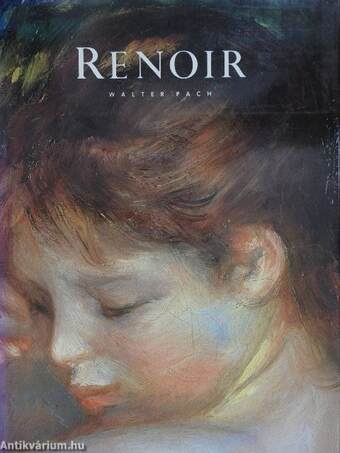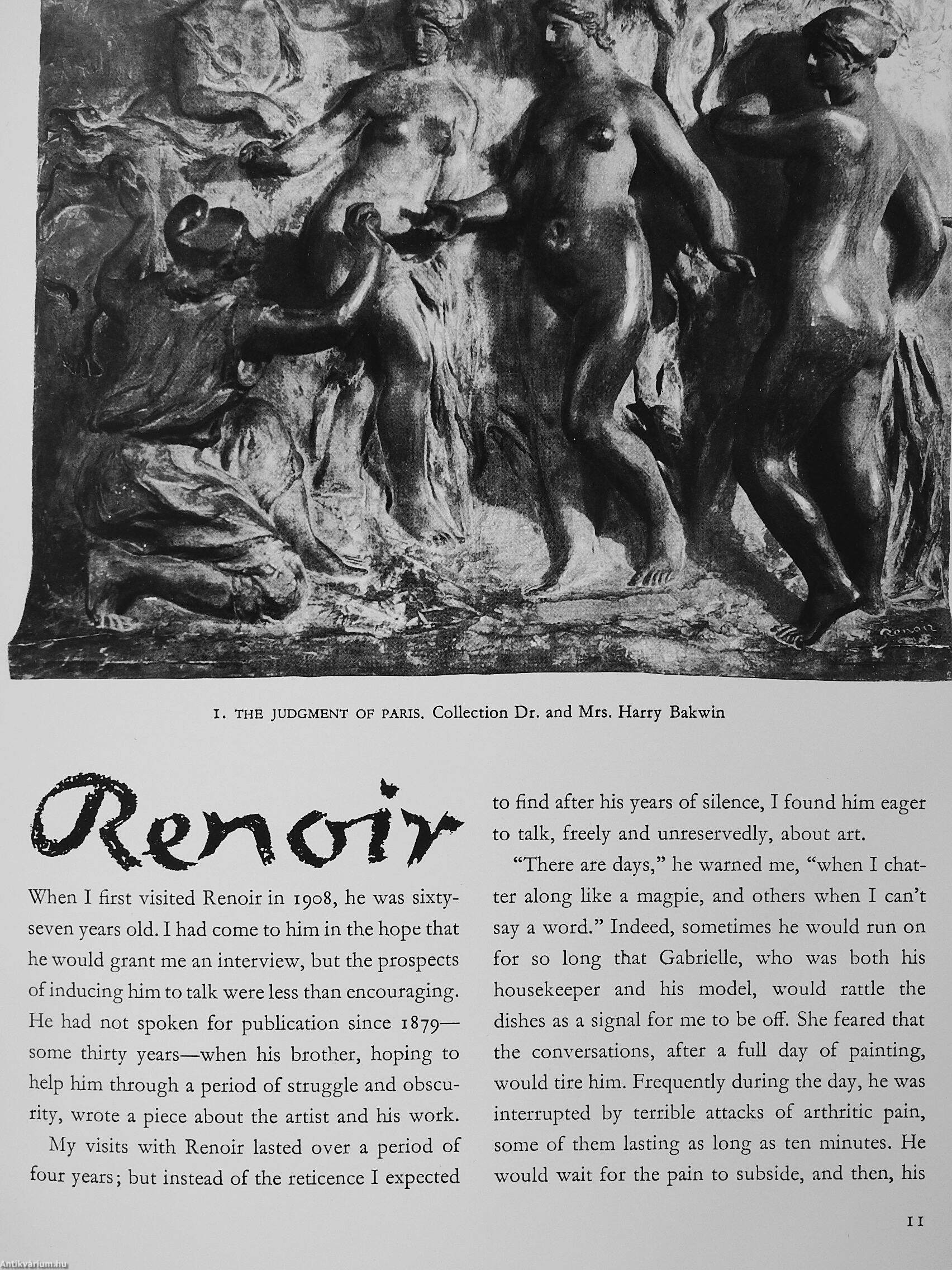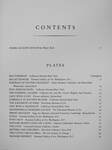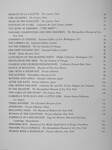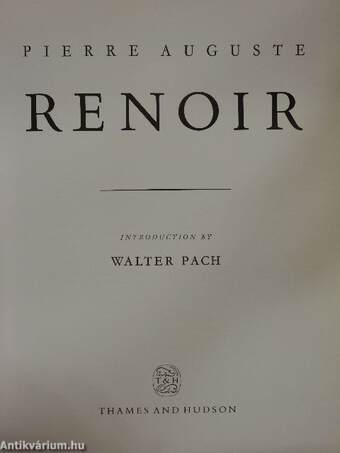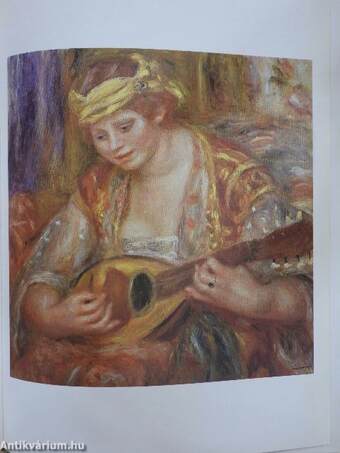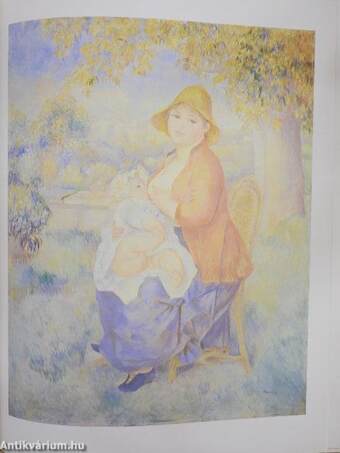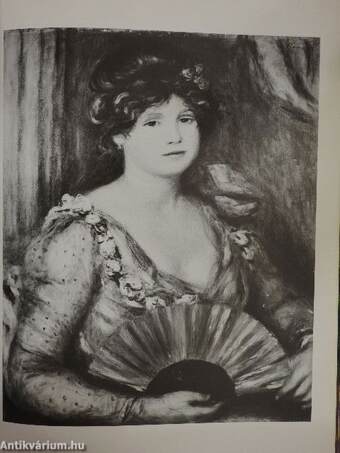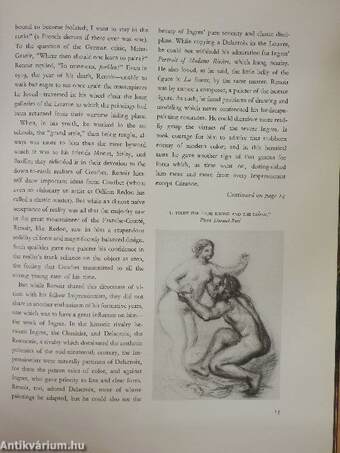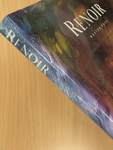1.116.661
kiadvánnyal nyújtjuk Magyarország legnagyobb antikvár könyv-kínálatát
Pierre Auguste Renoir
| Kiadó: | Thames and Hudson Ltd. |
|---|---|
| Kiadás helye: | London |
| Kiadás éve: | |
| Kötés típusa: | Vászon |
| Oldalszám: | 127 oldal |
| Sorozatcím: | |
| Kötetszám: | |
| Nyelv: | Angol |
| Méret: | 31 cm x 23 cm |
| ISBN: | 0-500-08017-8 |
| Megjegyzés: | Színes és fekete-fehér reprodukciókkal. |
naponta értesítjük a beérkező friss
kiadványokról
naponta értesítjük a beérkező friss
kiadványokról
Előszó
TovábbFülszöveg
Renoir
T
^111-: WARM, SHNSUOUS PAIN i iNG of Auguste Rcnoir was throughout his long life the art of a man on good terms with the world—a world in which he saw little that was not beautiful. His delightfully colourful and rich depictions of dances, of picnics, of smiling children, of full-faced, often buxom young women and of glowing nudes reflect at once the ideals of Impressionism and the contentment of their creator. Renoir is reported to have said to an instructor, "If it did not amuse me to paint, 1 beg you to believe that 1 wouldn't do it."
For Renoir—a leader among the Impressionists—nothing could ever dim the inexhaustible joy of painting. Born in 1841, Renoir had decided by 1862 on a career in art. He showed six paintings in the historic first Impressionist exhibition of 1874, and his output in the following years was enormous. About 1898 he began to suffer from arthritis, but continued to paint, even when (by 1912) he had to paint with a brush strapped to his arm.... Tovább
Fülszöveg
Renoir
T
^111-: WARM, SHNSUOUS PAIN i iNG of Auguste Rcnoir was throughout his long life the art of a man on good terms with the world—a world in which he saw little that was not beautiful. His delightfully colourful and rich depictions of dances, of picnics, of smiling children, of full-faced, often buxom young women and of glowing nudes reflect at once the ideals of Impressionism and the contentment of their creator. Renoir is reported to have said to an instructor, "If it did not amuse me to paint, 1 beg you to believe that 1 wouldn't do it."
For Renoir—a leader among the Impressionists—nothing could ever dim the inexhaustible joy of painting. Born in 1841, Renoir had decided by 1862 on a career in art. He showed six paintings in the historic first Impressionist exhibition of 1874, and his output in the following years was enormous. About 1898 he began to suffer from arthritis, but continued to paint, even when (by 1912) he had to paint with a brush strapped to his arm.
This volume's forty colour plates, each with a descriptive commentary providing both insight and anecdote, along with nearlv thirty black-and-white reproductions of drawings and studies, present a rich and representative sampling of Renoir's art. Several of his bronzes are shown too, and a self-portrait reveals a Renoir almost as charming and unaffected as the children he portrayed.
In his introduction to the life and work of Renoir, Walter Pach— American painter, printmaker, and author of several books on nineteenth- and twentieth-century art—says, "Previous centuries had given to the world such giants as Titian and Rubens . . . but for a Renoir, with his portrayal of the mysterious beauty of childhood, of summer skies, flowers, the female nude, the world had to wait for the modern period."
Wich 6<S illustrations. 40 in colour Vissza


